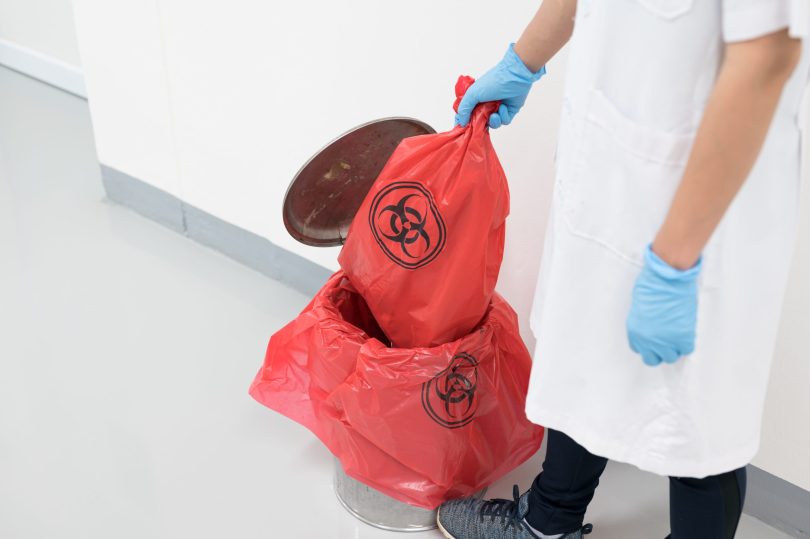Medical waste management is a complex and rapidly changing field. With the advent of newer technologies, medical waste management has become increasingly important.
It is vital to understand the fundamentals of medical waste disposal to ensure proper and safe disposal of potentially hazardous materials.
This blog post will discuss the basic principles of medical waste management and provide insights into how to properly handle any type of medical waste.
By understanding these fundamentals, you can help protect yourself and your surroundings from potential health risks associated with improper handling or disposal of medical waste disposal products.
What is Medical Waste?
Table of Contents
- What is Medical Waste?
- How does Medical Waste Age?
- What are the Dangers of Medical Waste?
- How can Medical Waste be Managed Effectively?
- Who is Responsible for Managing Medical Waste?
- What are the Regulations for Medical Waste Management?
- What are Some Best Practices for Medical Waste Management?
- Conclusion
Medical waste is any solid or liquid material that is generated in the diagnosis, treatment, or immunisation of human beings or animals, in research pertaining thereto, or in the production or testing of biological waste.
This includes sharps waste, pharmaceuticals, pathology specimens, body parts, radioactive materials, and fluids from surgeries. Improper management of medical waste can lead to the spread of disease and infection, as well as pose a danger to the environment.
There are strict regulations governing the disposal of medical waste, and it is important to work with a reputable company that specialises in medical waste management in order to ensure compliance.
How does Medical Waste Age?
As we mentioned above, there are three types of medical waste: raw, finished, and discarded. Raw, or unprocessed, waste is what comes off the body when you urinate or have sexual contact with a live human body. This is considered public health waste and can be disposed of in landfills or a landfill.
Finished, or processed, waste is what comes off the body when toxins or cancers have been removed; such as by surgery or some other procedure that involves removing part of the body. This is considered private health waste and can be disposed of in a landfill.
What are the Dangers of Medical Waste?
Medical waste is any solid or liquid waste that is generated in the diagnosis, treatment, or immunisation of human beings or animals.
This type of waste can be infectious, toxic, or radioactive. If not properly managed, medical waste can pose a serious threat to public health and the environment.
There are a number of dangers associated with medical waste. One of the most serious is the potential for infection. Waste from hospitals and other healthcare facilities can contain harmful bacteria and viruses that can cause serious illness or even death.
Improperly managed medical waste disposalcan also lead to the spread of antibiotic-resistant bacteria, which are becoming increasingly common and difficult to treat.
Medical waste can also be toxic. Wastes from certain medical procedures, such as chemotherapy, can contain hazardous chemicals that can be harmful if not disposed of properly.
Radioactive wastes generated by nuclear medicine procedures can also pose a risk to public health if not properly managed.
Finally, improper management of medical waste can have serious environmental impacts. Medical wastes disposed of in landfills can leach harmful chemicals into groundwater supplies while incinerating medical wastes produces air pollution that can adversely affect human health.
How can Medical Waste be Managed Effectively?
There are four key strategies for effective medical waste management: segregation, containment, incineration, and autoclaving.
Segregation is the process of separating different types of waste so that they can dispose of properly. This is important because different types of medical waste require different disposal methods. For example, clinical waste should segregate from general rubbish so that it can be used as a clinical waste incinerator.
Containment is the process of preventing medical waste from coming into contact with people or the environment. This is usually done by using specially designed medical waste bags or containers.
Incineration is the process of burning medical waste in a special incinerator. This is the most effective way to destroy infectious agents and is often use for clinical waste.
Autoclaving is the process of using steam and pressure to sterilise equipment and materials. This is often use for sharps (needles, syringes, etc.)
Who is Responsible for Managing Medical Waste?
In most cases, medical waste is the responsibility of the facility where it is generated. This means that hospitals, clinics, long-term care facilities, veterinary offices, and other places where medical procedures are perform are responsible for managing their own medical waste.
There are some exceptions to this rule, however. For example, in some states, home healthcare workers may be responsible for disposing of their own medical waste.
There are a number of different ways to dispose of medical waste, but the most common method is incineration.
This involves burning the waste at very high temperatures so that it is reduce to ashes. Incineration is consider to be the safest and most effective way to dispose of medical waste, but it can be expensive.
Other methods of disposal include autoclaving (using steam and pressure to sterilise the waste), landfilling (burying the waste in landfill sites), and wastewater treatment (treating the waste before it enters the water supply).
No matter who is responsible for managing medical waste, it is important that they follow all local, state, and federal regulations regarding its disposal.
Medical waste disposal should never dispose of in regular trash cans or dumpsters as this can pose a serious health risk to sanitation workers and others who come into contact with it.
What are the Regulations for Medical Waste Management?
According to the EPA, medical waste is define as anything that has come into contact with blood or other potentially infectious materials.
This includes items such as needles, syringes, gauze pads, and cultures. There are strict regulations in place for the management of medical waste, as it can pose a serious health risk if not properly handle.
The first step in proper medical waste management is to identify what items are consider medical waste. Once these items have been identified, they should be segregate from other waste streams.
Medical waste should then be properly package and label before being transport to a licensed disposal facility. At the disposal facility, the medical waste will treat according to federal and state regulations.
This may include incineration, autoclaving, or landfill disposal. After the medical waste has been properly dispose of, it is important to clean and disinfect any areas that may have come into contact with it.
Biomedical waste management is a crucial part of protecting public health. By following the proper procedures for handling and disposing of medical waste, we can help prevent the spread of disease and keep our communities safe.
What are Some Best Practices for Medical Waste Management?
There are several best practices for medical waste disposal to help ensure that waste is dispose of properly and does not pose a risk to public health.
Some of the key best practices for medical waste management include:
● Segregating medical waste from general household waste to prevent contamination
● Properly labeling all medical waste so it can be easily identified
● Using approved disposal methods and facilities for medical waste
● Ensuring that all staff members who handle medical waste are properly trained
● Keeping up with local, state, and federal regulations surrounding medical waste management
Well, this is a question that most of us have asked ourselves at one time or another. Because what we do with our medical records matters.
The last thing we want to do is bring about our medical career by getting someone else’s personal records to destroy.
But in an effort to help patients and other medical waste management professionals reduce the amount of medical waste they produce, we all need to be aware of the basics.
Conclusion
As the healthcare industry continues to grow, medical waste management will remain an important factor in helping healthcare facilities operate safely and efficiently.
Knowing the fundamentals of proper medical waste management is essential for any healthcare facility and its staff so as to keep up with regulations, reduce risks, and protect both people and property from harm.
With correct handling procedures in place, coupled with compliant disposal methods, hazardous waste management can easily be managed responsibly without putting anyone’s health at risk.







